
The Victorian Artists Society, which can trace its establishment to 1856 in Melbourne, promotes artistic education, art classes and gallery hire exhibition in Australia. It was formed in March 1888 when the Victorian Academy of Arts and the Australian Artists' Association amalgamated.
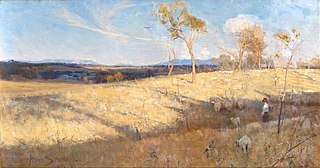
The Heidelberg School was an Australian art movement of the late 19th century. It has been described as Australian impressionism.
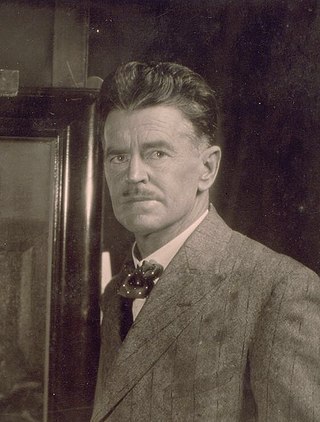
William Beckwith McInnes was an Australian portrait painter, winner of the Archibald Prize seven times for his traditional style paintings. He was acting-director at the National Gallery of Victoria and an instructor in its art school.
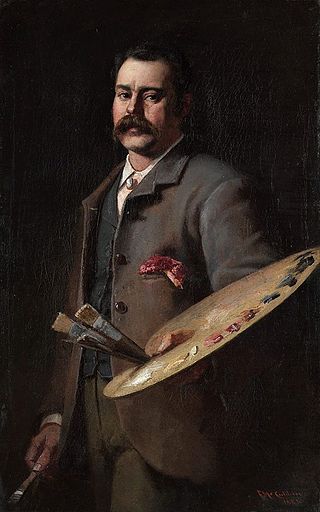
Frederick McCubbin was an Australian artist, art teacher and prominent member of the Heidelberg School art movement, also known as Australian impressionism.
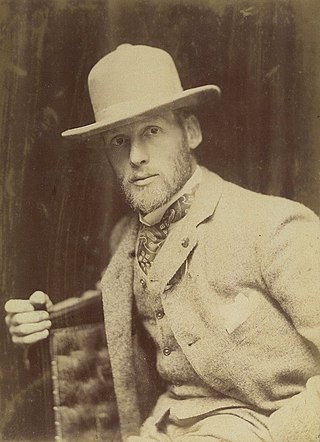
Thomas William Roberts was an English-born Australian artist and a key member of the Heidelberg School art movement, also known as Australian impressionism.

Robert Hoddle was a surveyor and artist. He is best known as the surveyor general of the Port Phillip District from 1837 to 1853, especially for creation of what is now known as the Hoddle Grid, the area of the CBD of Melbourne. He was also an accomplished artist and depicted scenes of the Port Phillip region and New South Wales. Hoddle was one of the earliest-known European artists to depict Ginninderra, the area now occupied by Canberra, Australia's National Capital.

The Athenaeum or Melbourne Athenaeum at 188 Collins Street is an art and cultural hub in the central business district of Melbourne, Victoria, Australia. Founded in 1839, it is the city's oldest cultural institution.

The Box Hill artists' camp was a site in Box Hill, Victoria, Australia favoured by a group of plein air painters in the mid to late 1880s who later became associated with the Heidelberg School art movement, also known as Australian impressionism.

Walter Herbert Withers was an English-born Australian landscape artist and a member of the Heidelberg School of Australian impressionists.
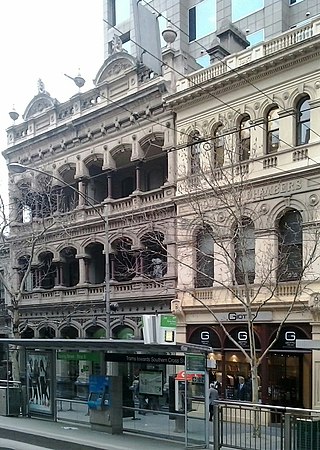
Grosvenor Chambers, at number 9 Collins Street, Melbourne, contained the first custom-built complex of artists' studios in Australia.

John Mather was a Scottish-Australian plein-air painter and etcher.

Melbourne Savage Club is a private Australian gentlemen's club founded in 1894 and named after the poet, Richard Savage. Bohemian in spirit, the club was to bring together literary men, and those immediately connected or sympathising with literature, the arts, sport or science. Its membership is particularly secretive with a strong code of silence; members are traditionally the elite or 'savages' in the arts, business and politics. Travelling savages enjoy good fellowship through reciprocal arrangements with other private clubs throughout the world.

On the wallaby track is a 1896 painting by the Australian artist Frederick McCubbin. The painting depicts an itinerant family; a woman with her child on her lap and a man boiling a billy for tea. The painting's name comes from the colloquial Australian term "On the wallaby track" used to describe itinerant rural workers or "swagmen" moving from place to place for work. The work has been described as "among the best known and most popularly admired of Australian paintings".

Charcoal burners is a 1886 painting by the Australian artist Tom Roberts. The painting depicts three rural labourers "splitting and stacking timber for the preparation of charcoal". Roberts, influenced by the Barbizon school and Jules Bastien-Lepage, would later return to the theme of rural men working in his works A break away! and Shearing the Rams.

Esther Paterson Gill was an Australian artist, book-illustrator and cartoonist.

Thomas Humphrey was a Scottish-born Australian artist and photographer who was associated with the Heidelberg School art movement, also known as Australian impressionism.
Jane Rebecca Price was an Australian painter who was a foundation member of the Melbourne Society of Women Painters and Sculptors. Two of her works have been acquired by the National Gallery of Victoria and two by the Art Gallery of South Australia. She was a close associate of members of the group of painters known as the Heidelberg school.
Sedon Galleries was a commercial art gallery in Melbourne, Australia, representing Australian traditional, impressionist and post-impressionist painting and prints. It operated from 1925 to 1959.

Arnold Joseph Victor Shore was an Australian painter, teacher and critic.
The Buonarotti Club was a bohemian artists' society in Melbourne, Australia between 1883 and 1887, associated with Heidelberg School of painters.


















